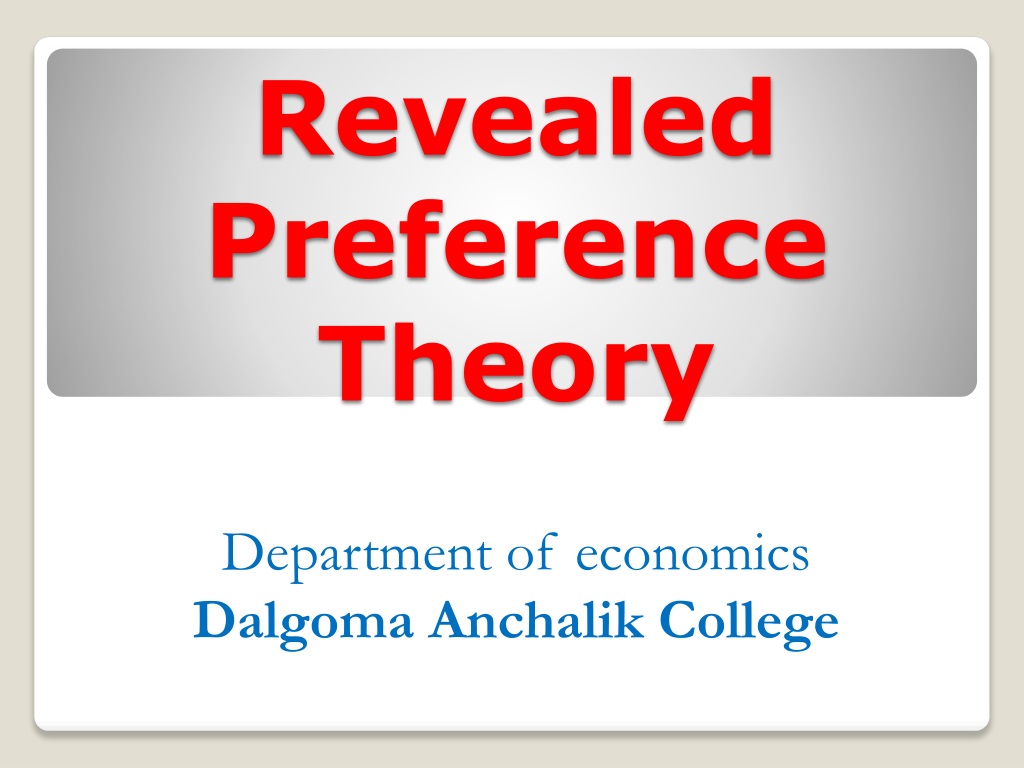

Replay
0 likes | 14 Views
Revealed Preference Theory, introduced by Paul Samuelson and John Hicks, overcomes limitations of indifference curve analysis by deriving consumer preferences from actual market behavior. Assumptions include constancy, consistency, transitivity, and rationality. The theory is graphically represented to analyze consumer choices based on observed purchases.

E N D
Revealed Preference Theory Department of economics Dalgoma Anchalik College
Revealed Preference Theory Revealed Preference Theory: Introduction We know that there are some limitations of indifference curve analysis. Like, in indifference curve analysis, we ask consumers to choose between various market baskets or combinations of goods. But, we cannot be sure that the consumers provides trustworthy 2
Revealed Preference Theory Revealed Preference Theory: Introduction Paul Samuelson and John Hicks said that we can observe the actual behavior of the consumers to overcome the limitation. According to the ‘Theory of Revealed Preference’ a consumer’s indifference curves can be derived from observing the actual market behavior of the consumer and without any need to inquire indirectly about preferences. 3
Revealed Preference Theory Revealed Preference Theory: Introduction For example, if a consumer purchases basket A rather than basket B, even though A is not cheaper than B, we can infer that the consumer prefers basket A to basket B. Here, basket is A costly and basket B is cheaper. But the consumer buys basket A. Hence, basket A > basket B. 4
Revealed Preference Theory Revealed Preference Theory: Assumptions Constancy. The tastes of the consumer do not change over the period. Consistency. The consumer’s tastes are consistent. (If A>B and then B!>A i.e. B can’t be >A). Transitivity. The consumer’s tastes are transitive. (If A>B and B>C, then obviously it indicates A>C). Rationality. The consumer purchases any basket if its price is lowered sufficiently. 5
Revealed Preference Theory Revealed Preference Theory: Assumptions Consistency. The consumer’s tastes are consistent. This assumption is called Weak Axiom of Revealed Preference (WARP). Transitivity. The consumer’s tastes are transitive. This assumption is called Strong Axiom of Revealed Preference (SARP). 6
Revealed Preference Theory Revealed Preference Theory: Graphically 7
Revealed Preference Theory Revealed Preference Theory: Graphically 8
Revealed Preference Theory Revealed Preference Theory: Graphically 9
